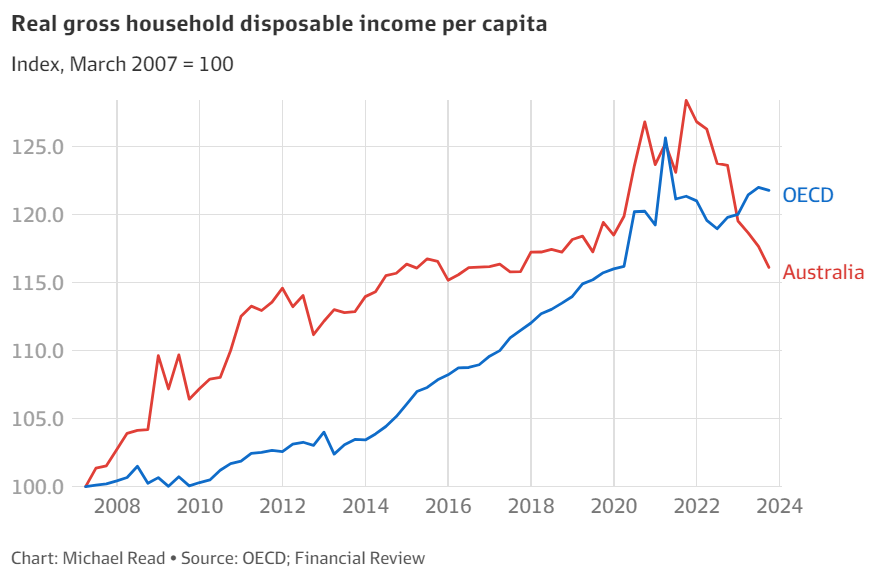Earlier this year, Michael Read of The Australian Financial Review published an analysis showing that Australian households experienced the steepest decline in real per capita household disposable income in the world last year:
According to Read, real per capita Australian household incomes fell by 6.1% in the year to September 2023, versus a 1.7% rise across OECD economies:

Advertisement
Last week, the Australian Bureau of Statistics (ABS) released the Q1 national accounts, which showed that Australian real per capita household disposable incomes fell by 3.9% in the year to March:

While this was an improvement on the revised 5.8% decline recorded in the year to September 2023, it has left decade-average income growth at only 0.03%, which is the worst result in more than 60 years of records.
Advertisement
Annual real per capita household disposable income has collapsed 7.6% from the June 2022 peak and is now tracking at early 2018 levels:

There have been four leading causes of the decline in Australian household disposable incomes:
Advertisement
- The sharp 7.1% decline in Australian real wages.
- The circa 30% rise in average mortgage repayments.
- The hyper-inflation of housing rents.
- The increase in income taxes brought about by bracket creep and the expiry of the Lower-Middle Income Tax Offset.
Household disposable incomes will get a shot in the arm from the Stage 3 tax cuts, with the average Australian worker estimated to keep an extra $1888 of their wages in 2024-25 compared with the current financial year.
Disposable incomes will benefit from interest rate cuts when they finally arrive late this year or early next.
Advertisement
Nevertheless, this decade is shaping up to be the worst for household income growth in 70 years of records.
It will be another ‘lost decade’ for Australian households.

